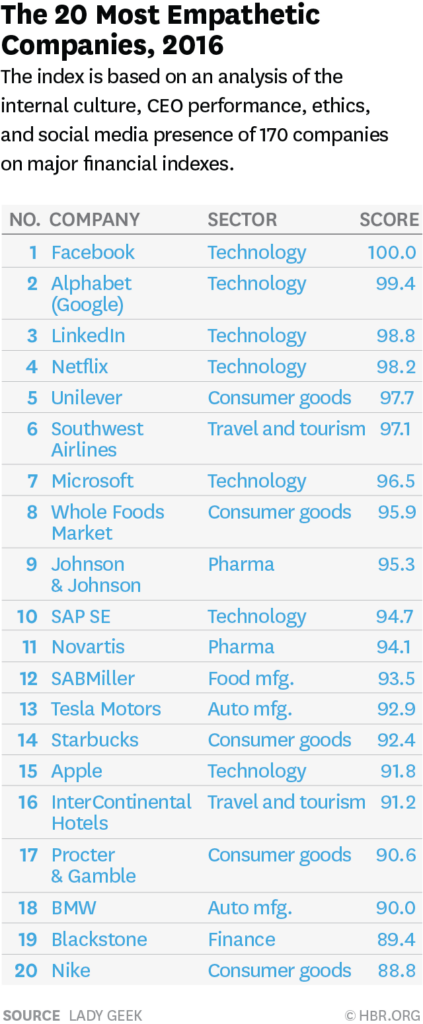Here’s something to ponder over – what’s the best way to study wildlife? A trip to the zoo or a jungle excursion? While the zoo is a cheaper, easier alternative, there is no denying that the jungle is where the real deal lies.
Ethnography is exactly like that. It involves the study of the intended subjects in their own environment.
Humans are complex beings, there is no denying that. Our evolved minds and intricate social constructs have a deep impact on the way we behave. In the words of cultural anthropologist Margaret Mead, “What people say, what people do, and what people say they do are entirely different things.”
A fundamental part of UX design is dedicated exclusively to researching this complex behavior and using those insights as a base to create meaningful products and experiences. Just as wildlife researchers spend extended periods in the jungles to gain a first-hand understanding of animal habitats, UX researchers conduct ethnography exercises to gain insights about user behavior.
What is Ethnography?
Ethnography is defined as a qualitative study of social interactions, behaviors, and perceptions that occur within groups, teams, organizations, and communities.
This user research method makes use of personal stories, experiences, and interactions. It involves observing users go about their tasks in their natural environment. This can be done in-person by a team of researchers, or as observations made of video recordings, or in the form of direct interviews, or a combination of all of these.
It helps in modeling and quantifying complex parameters such as emotions and experiences. The data gained from conducting ethnographic research is powerful and offers deep insight into the user psyche.
Take Adidas, for instance – a company that was creating performance sports shoes and apparel based on the assumption that what was desirable to performance athletes would ultimately also be attractive to consumers. Within a few years of following this strategy, it was clear that Adidas was struggling to gain hold in the fitness segment whereas most of its competitors were thriving.
Ethnographic studies made by the company revealed a compelling truth – that the priorities of consumers differed significantly from those of athletes. For instance, consumers expected their clothes and shoes to be aesthetically pleasing, a feature athletes typically did not care about. This was the foundation of Adidas making sweeping changes in its product strategy.
Ken Anderson, Intel Research’s anthropologist summed up the use of ethnographic research in Harvard Business Review, “Our goal is to see people’s behavior on their terms, not ours. While this observational method may appear inefficient, it enlightens us about the context in which customers would use a new product and the meaning that product might hold in their lives.”
Supporting arguments and opposing arguments for ethnography research
Advantages
- First-hand observations of users interacting with technology in their natural environment
- Identify unexpected issues that you might not have encountered in a usability test
- Accounts for the complexity of group behaviors
- Helps reveal interrelationships among multifaceted dimensions of group interactions
- Helps provide context for behaviors
Disadvantages
- As it involves prolonged observation, it takes longer to generate and analyze
- Shorter sprints may result in skewed data as users aware of the researchers may behave differently
- Requires sustained efforts and engagement in terms of budget
- Dependent on the diversity of the research team and participants
- Possibility of observer bias
Ethnography in UX Design
Ethnographic research has its roots in anthropology – the study and representation of a culture. With user-centered design gaining prominence, ethnographic research methods have made a significant contribution to product development.
The most important benefit of ethnographic research in the design process is that it’s conducted in a real-life environment. Design research derives tremendous value from observing users in real-life scenarios, revealing insights that even the best-designed laboratory experiments can be ill-equipped to present.
A hand tool manufacturer was looking to generate new product ideas and decided to conduct an ethnographic research exercise. There was a team of ethnographers tailing electricians and plumbers as they went about their daily tasks. In doing so, it was observed that some handyman stored their screwdrivers in a tool belt for easy access. When up a ladder, they would reach for a tool and sometimes pick out the Phillips screwdriver when they were looking for the one with a flat blade. It was this observation that led ethnographers to suggest creating tools with an indentation on top to indicate the nature of the tip – an (x) for the Phillips and a (-) for the slotted end. This small yet highly efficient addition was the result of dedicated observation, a fact that could have slipped through numerous interviews and focus group conversations.
Ethnographic research brings diversity to the table, just as its major focus – culture. It is also known as field research, site visits, contextual inquiry, to mention a few. It is more on the lines of a mindset helping researchers understand the user group’s motivations and pain points accurately through observation.
If you want to know How Ethnography Can Be Used For Product Development watch this video:
How Ethnographic Research Benefits Businesses
Ethnography research provides a more accurate and in turn better ROI for a business as it gets inside the users’ physical and mental headspace through contextualized observations and patterns.
Ethnography holds the key to how we perceive ourselves and the world, and how we act even when no one else is around.
As an example, Netflix partnered with cultural anthropologist Grant McCracken to witness how their users behaved and lived in their own homes to gain a better understanding of the meaning and importance of binge-watching. Insights from this study formed the base of strategic decisions to release episodes in bulk to boost viewership. Additionally, these insights also altered artistic choices and approaches to storytelling and plot development.
Research suggests that higher empathy towards users leads to stronger financial performance, better customer satisfaction, greater creativity, and even healthier employees.

Ethnography research identifies the true needs of the users and the business. Things can go wrong when a lot of resources are invested in researching the business’s wants instead of what their users actually need. Ethnography research lets companies study the business-user relationships in real-time, which reveals the actual needs of the business and not just the wants. By observing users going about their usual tasks, a lot of latent truths regarding where the system falls short, is too complex, or fails in serving the right needs emerge.
Business owners have a duty to understand that their users have to be seen as humans before they’re classified as customers or employees – as it happened in the case of Adidas and Netflix, along with a host of other companies such as Intel, LEGO, Microsoft, and more. The distance between the business and its end-users could be vast, but it can be covered by employing an empathic understanding of the human experience. Ethnographic research is the tool for businesses to bridge that gap between their users and their goals.
Conducting Ethnographic Research
Conducting ethnographic research involves a series of well-defined steps and methodologies that help researchers gather valuable insights into the behaviors, needs, and motivations of their target audience. Here’s a closer look at the key steps and methodologies involved:
- Define Research Objectives: Start by clearly defining your research objectives. What are the key questions you need to answer? This step is crucial as it guides the entire ethnography research process, ensuring that the data collected is relevant and useful.
- Select Research Methods: Choose the most appropriate research methods for your study. Options include participant observation, in-depth interviews, focus groups, and surveys. Each method has its strengths and weaknesses, so select the ones that best align with your research objectives and the characteristics of your target audience.
- Recruit Participants: Recruiting the right participants is essential. Whether through random sampling or purposive sampling, ensure that your participants are representative of your target audience and willing to engage in the study.
- Conduct Fieldwork: This is where the magic happens. Collect data through observations, interviews, and other methods by spending time with participants in their natural environments, such as their homes, workplaces, or communities. This immersive approach provides a deeper understanding of their behaviors and motivations.
- Analyze Data: Once the fieldwork is complete, analyze the ethnography data using techniques like coding, theme identification, and data visualization. This step helps identify patterns and trends, providing valuable insights into the behaviors, needs, and motivations of your target audience.
Tools and Techniques
Ethnographic researchers employ a variety of tools and techniques to collect and analyze data. Here are some of the most common ones:
- Participant Observation: This technique involves observing participants in their natural environments. By seeing how they interact with their surroundings, researchers can gain valuable insights into their behaviors, needs, and motivations.
- In-Depth Interviews: Conducting in-depth interviews, either in person or remotely, allows researchers to delve into participants’ thoughts, feelings, and experiences. This method provides a rich source of qualitative ethnographic data.
- Focus Groups: Gathering a group of participants to discuss their opinions, attitudes, and behaviors can yield valuable insights. Focus groups can be conducted in person or remotely, depending on the study’s requirements.
- Surveys: Surveys, whether online or offline, are useful for collecting data on participants’ demographics, behaviors, and attitudes. They can complement other research methods by providing quantitative ethnographic data.
- Data Visualization: Presenting findings through charts, graphs, and infographics helps identify patterns and trends in the data. Data visualization makes it easier to communicate the insights gained from the study to stakeholders.
Integrating Ethnographic Research into Product Development
Application of Findings
Ethnographic research offers a treasure trove of valuable insights that can be seamlessly integrated into various stages of product development. Here’s how you can leverage these insights to create products that truly resonate with your target audience:
- Product Design: Use the insights gained from ethnographic research to inform your product design. Understanding the needs and preferences of your target audience ensures that your product is not only functional but also user-friendly and appealing.
- Marketing Messages: Ethnographic research can reveal the attitudes and behaviors of your target audience, which can be used to craft compelling marketing messages. By aligning your marketing strategies with the insights gained, you can create messages that resonate deeply with your audience and drive engagement.
- Product Testing: Before launching a product, use ethnographic research to test its usability and effectiveness. This step helps identify any potential issues and ensures that the product meets the needs of your target audience, leading to higher satisfaction and fewer post-launch problems.
- Customer Support: Insights from ethnographic research can also inform your customer support strategies. By understanding the needs and preferences of your audience, you can tailor your support services to be more effective and responsive, enhancing overall customer satisfaction.
By integrating ethnographic research into your product development process, you gain a deeper understanding of your target audience. This not only helps in creating products that meet their needs but also fosters enhanced customer relationships, driving business growth and success.











